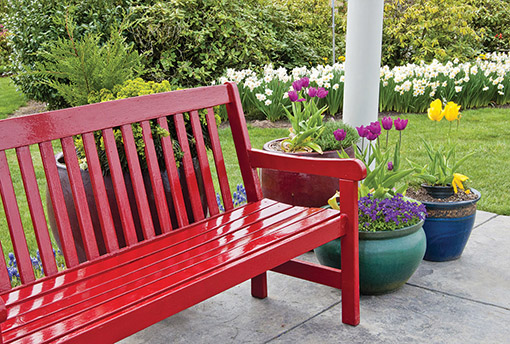By Peggy Ratusz
She grew up in Clifton Forge, VA. A small town where she says, “You can’t go to the grocery store without bumping into somebody you know.”
Thankfully for us, she now calls Asheville home, and has been telling the truth in songs to a plethora of audiences, for many years. Her latest release, Medicine for Living is acclaimed and award winning!
I met Alexa Rose through a mutual friend and heard her sing for the first time several years ago at an open mic. I remember turning to the person sitting next to me, and we both nodded with delight from her first turn of phrase.
We’re all in for a delightful experience as we get to know better, this weaver of deep and profound lyrics; this owner of a warm and flavorful vocal timbre that begins and ends with melodies pure and true. I sent her a series of questions for this feature and she answered them in her own thoughtful words:
How did you decide to become a songwriter?
I never really decided. One day I just began and haven’t stopped. I wrote my first song around age 13. It probably sounded like Regina Spektor or Ingrid Michaelson, my teenage songwriter crushes who, around this time, found their way through my small town radio speakers. No one ever showed me how to write a song or suggested I try it. I’m a firm believer there is no incorrect way to write a song.
Tell us about your writing process.
I love talking about process because it seems different for everyone. Sometimes I just pick up my guitar, play a chord and see what comes out of my mouth. I don’t dwell much on perfecting the lyrics in the beginning stages of the song. It’s common for the music and lyrics to find me at the same time, usually in an inconvenient place, like in the shower or on the way to work. I try to go as long as possible without writing anything down. Using the writing area of my brain tends to stunt my creative process.
Do you have a favorite original song?
On my new album, Medicine For Living, the title track is my favorite. I don’t really fall in love with my songs. I’m learning to be more gracious with them as it pertains to moderation. I don’t eat the same sandwich for lunch every day, and it’s the same thing with overplaying my songs. I try to give them rest and focus on new material.
What have you learned about yourself since you’ve made music your career?
That I’m blessed. This job is a privilege. I want to use my power carefully to say what I mean and lift others up. I’ve learned its good practice to step outside my bubble, walk in an unfamiliar neighborhood, keep friends who are and aren’t artists. Songwriters tell the story of the world as we know it and our responsibility is to challenge our paradigms, if anything, for the sake of the songs we leave behind.
Talk about your proud moments.
Winning the Chris Austin Songwriting Contest at Merlefest this year was big for me. Making a record with Big Legal Mess was another. The act of making music my career makes me proud. We are taught to dream as children, and then later told that we shouldn’t follow it simply because it doesn’t align with capitalism. I moved to North Carolina with zero connections. I owe my zest, to aligning with the music community here. It continues to encourage me. I’m proud I found the courage to steer my life in a direction meaningful to me.
Tell us about your fans.
They are amazing! Once a fan drew a picture of me riding on a giant armadillo (I love armadillos). One woman drives several hours to shows anytime we play even remotely near her. I’m their fan, because they show up and make what I’m doing worthwhile.
Talk about the amount of time and how you spend it, honing your craft.
The process is elusive. True inspiration comes in waves. I write often because it’s good to keep my mind in the habit of writing. A few years ago, I lived in the country with no electricity and more free time, so I tried to write a song a day. I wrote some bad songs and a few I kept that I wouldn’t have had otherwise (the final track on my latest album, “Untitled No. 47,” is a remnant of that project). Then sometimes I go six months without writing. I write best when there’s a pile of laundry on the chair and a little chaos in my life.
What is it about performing that keeps you pursuing opportunities to do so?
I love the variety of audiences, the changing landscapes of America, the ebb and flow of good fortune on the road. What really keeps bringing me back is when someone comes up to me after a show and tells me how a particular song is like a part of their own story, how it moved them in some way. Hearing that is totally redeeming.
Are there marked differences between what you write about and how you approach songwriting now vs. what it was, five or ten years ago?
Absolutely! Songs I wrote in my twenties were about relationships and changes all specific to my own life. After all, your own story is the one you tell with the most authority. Now I feel like I’m reaching for different subjects, as an observer. It’s a challenge because in telling another’s story I feel a larger sense of responsibility.
What are you working on now?
I’m writing songs about what I see happening in our country, about love, about change, about my great grandparents. I’m riding my bike more, cooking meals for my friends, and cuddling with my dog.
What can audiences expect to experience at one of your performances?
I tell the truth. Sometimes I bump my nose on the microphone when I close my eyes. And my bandmates always wear good hats.
What advice would you give your younger self?
Be yourself, send postcards, keep a sense of humor, and call your friends after you move away from them.
Rose is going on tour in November, but to keep up with her upcoming local performances, visit her website: alexarosemusic.com
Peggy Ratusz is a vocal coach, song interpreter, and songwriter. For vocal coaching email her at [email protected]







